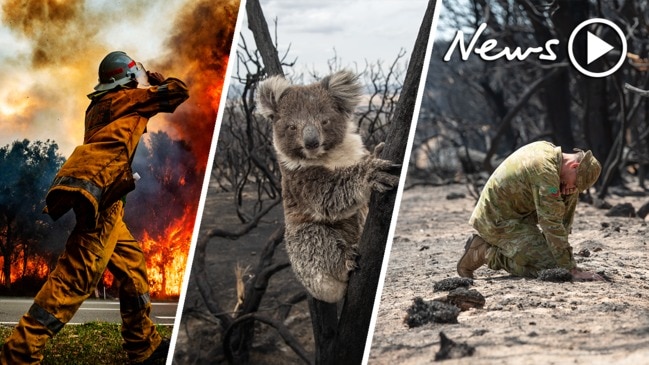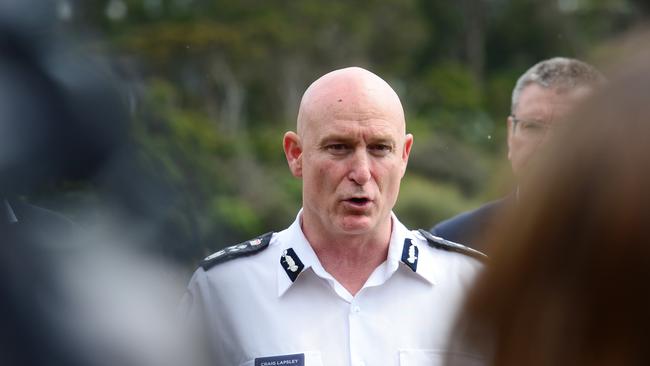Bushfire recovery chiefs Ken Lay, Andrew Colvin say locals will know best on rebuilding process
Energy micro-grids and fire refuges inside schools have been put forward as ways to make towns more resilient to future disasters, as bushfire recovery chiefs say communities will know what they need.

VIC News
Don't miss out on the headlines from VIC News. Followed categories will be added to My News.
Schools, halls and other public buildings damaged in this summer’s bushfires should be rebuilt to serve as emergency refuges, according to Victoria’s former emergency management commissioner.
Craig Lapsley is also calling for renewable energy micro-grids to be established in small towns to keep the power on and services running in case they are cut off during future fire disasters.
He said “hardening up infrastructure” to make communities “sustainable and resilient” needed to be a focus of the recovery effort, rather than “taking away the right” of people to live in at-risk areas.

In interviews with the Herald Sun this week, Bushfire Recovery Victoria chief Ken Lay and national counterpart Andrew Colvin said new resilience measures would be part of the long-term rebuilding process but that locals knew best about what their communities needed.
Mr Lay, Victoria’s former police commissioner, said immediate issues in bushfire-hit communities included road closures, damaged fencing, clean-up of destroyed buildings, mental health support and access to grants.
He said while some affected Victorians were “positive about the future”, there was “enormous fragility” among others who did not know “what the future looks like” in their communities.
Asked about changes needed to make towns more resilient to future fires, Mr Lay said it was “very, very difficult in this beautiful country” to make communities “100 per cent safe”.
But he said it was clear “these people want to make decisions for themselves”.

Mr Colvin, the National Bushfire Recovery Agency boss, said authorities should not assume traumatised communities were “ready to have a discussion about what rebuilding looks like”.
He said locals would guide that process, and the response needed to consider “how can we learn the lessons to make sure we’re better prepared and more resilient if we have another event of this nature”.
“We need to do some very localised rebuilding to bring back a sense of normality to these communities and send a clear message that we are open for business in these areas,” Mr Colvin said.

“Will everybody want to rebuild, or to rebuild the same way? Probably not, and we need to help those people as well.”
Mr Lapsley said this summer’s fires should be a “watershed” moment to improve bushfire resilience, and called for a major review of hazard reduction policies.
He said prioritising conservation values had left too much fuel in public land so bushfires were now so intense they threatened “where we live and what we love”.
Mr Lay said there was “quite a lot of heat” in that discussion. He said he felt Victoria’s fire prevention and mitigation strategies were broadly right but reviews were needed.
RELATED:
CALLS FOR PARADE TO HONOUR FIREYS
BEST EVENTS IN REGIONAL VICTORIA TO VISIT AFTER THE BUSHFIRES
“We need to be challenged, we need to be tested otherwise we don’t get better,” Mr Lay said.
Asked about donations made to support the relief effort, he said the number of funds and the lack of control over where that money was spent “intuitively doesn’t feel right”.
“It’d be nice to be able to have some influence into that … It is an issue out there,” he said.
“I’m seeing lots and lots of problems that could be greatly assisted with access to some of this money. Work to be done.”

